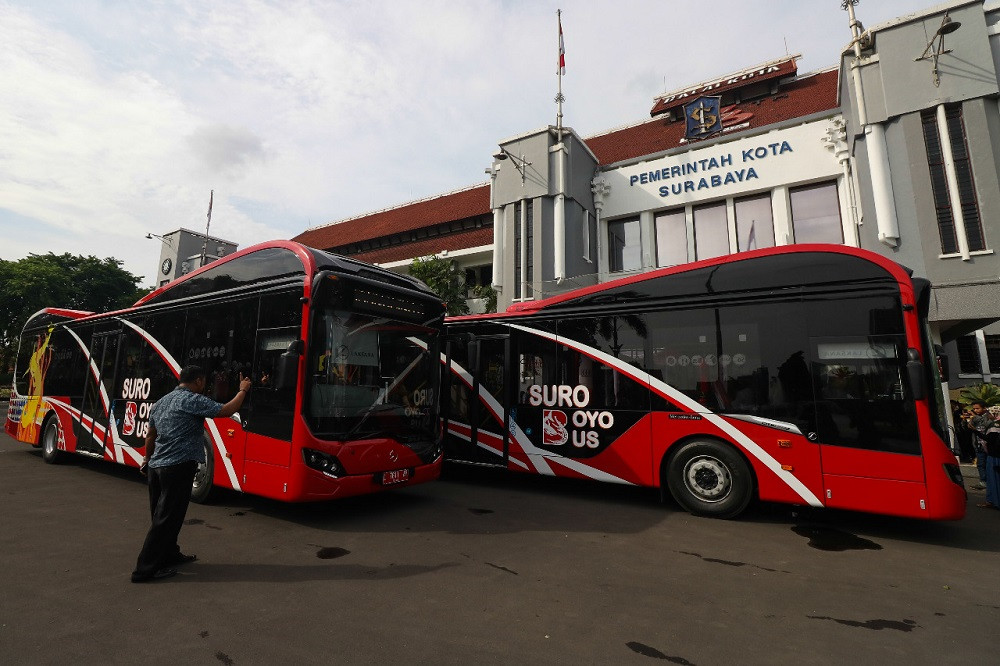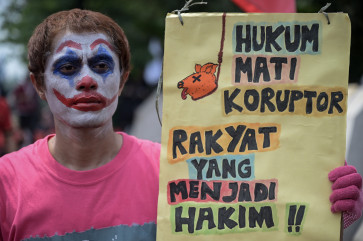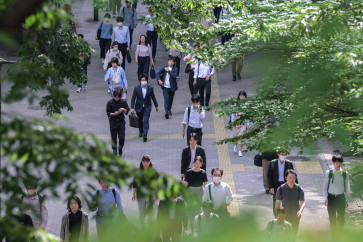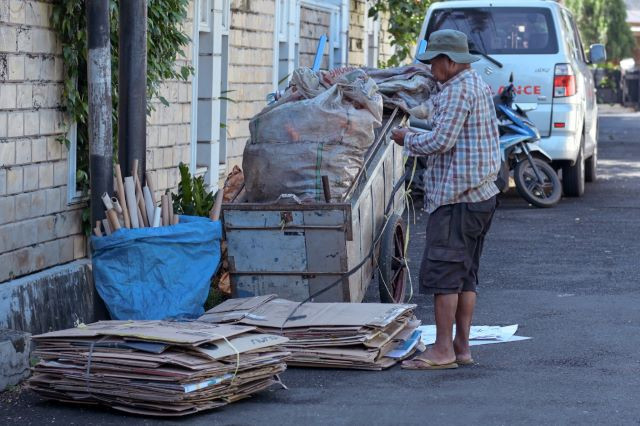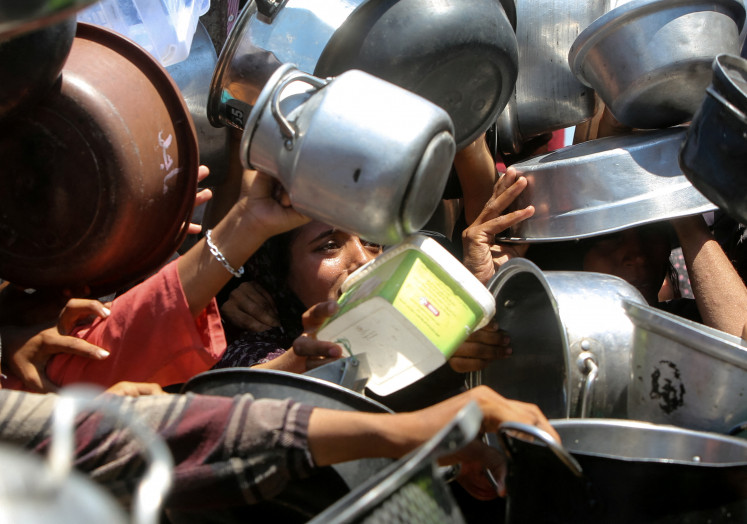Popular Reads
Top Results
Can't find what you're looking for?
View all search resultsPopular Reads
Top Results
Can't find what you're looking for?
View all search resultsSuroboyo Bus: An innovation with great potential
Even if we had more routes and a better timetable that would certainly motivate more citizens to embrace the Suroboyo Bus, we would run the risk of incentivizing the use of plastic bottles rather than aiming at totally eliminating the problem of too much plastic around us.
Change text size
Gift Premium Articles
to Anyone
T
his could be a real trailblazer on how to induce more citizens to use public transportation while also taking care of the environment.
We are talking about the Suroboyo Bus launched by the administration in Surabaya, East Java, on April 7, 2018, a different kind of bus because it brings you to your destination while also helping you getting rid of your plastic bottles.
Conveniently enough this initiative allows passengers to exchange their bottles for tickets. With a minimum of either three 1.5-liter bottles, five medium-sized bottles, or 10 plastic cups, people can take the bus for two hours. The bottles can be exchanged directly on the bus or in specifically designed locations where they can give away their bottles and get a free pass.
With a total of 20 buses and eight more to come by May 2021 the Suroboyo Bus operates daily from 6 a.m. to 10 p.m. around the city with two lines, north-south, west-east between Surabaya and Kenjeran Park-Gunung Anyar, and new lines are being planned.
Mobile apps are also available to track the buses and their whereabouts and the latest extra buses also have a cabin to put bicycles and a pressing machine to compress the plastic bottles.
You might be wondering about the impact and we ourselves wanted to know more about it.
Information shows that one Suroboyo Bus alone can collect up to 250 kilograms of plastic bottles a day, or roughly 7.5 tons in a month.
Unfortunately there is no information available on the overall amount of plastic collected and recycled since the launch.
Showing people the impact of their conscious actions can exponentially increase the number of passengers and it could make sense to have some sort of instant electronic display on each bus of the fleet, showing the quantity being collected so far in real time.
A more simple solution would show an updated display with the amount of plastic brought by the users in the previous weeks and months.
Since the start, the low number of routes and the long waiting times, around 20 minutes for each ride, have been the main obstacles to getting more citizens to embrace the initiative.
People mostly take the Suroboyo Bus for a city tour with family, as data show the bus is more crowded on weekends.
To be fair the local administration is thinking creatively in terms of motivating more people to use it.
First of all, the technology, leveraged through social media, providing all the information about the service, including timing and bus tracking is exceptional.
Second, in a very promising move, free bus fares were made available for all pre-school, elementary school and junior high school staff by only showing their ID cards.
Moreover, now there are additional 13 new locations, a real network, to exchange the plastic bottles for bus fares.
The fact that university students are requesting to enjoy this same facility as well, means that there is a potential demand from a very important target group.
Involving and engaging youth is fundamental in changing behavioral patterns with practical and positive implications in reducing the number of highly polluting two-wheelers often used by them to commute daily while also instilling more sustainable consumption habits in them.
However there is a catch, a problem that might undermine the logic behind this initiative:
Even if we had more routes and a better timetable that would certainly motivate more citizens to embrace the Suroboyo Bus, we would run the risk of incentivizing the use of plastic bottles rather than aiming at totally eliminating the problem of too much plastic around us.
Paradoxically, instead of inducing people to end the use of, or better re-using, plastic bottles, the logic behind the initiative would lead to the opposite effect, more plastics.
Do people have to really buy more plastic bottles to use the service?
One solution could be mainstreaming the concept of the Suroboyo Bus into the public bus network run by the city of Surabaya.
Imagine all its buses promoting the sustainable development goals (SDGs), focused not only on plastic recycling but on presenting a message of sustainability while also doing the job people expect them to do: helping them reach their destination economically while reducing their individual footprints.
Indeed, the longer-term goals should be to have more users leaving behind their private vehicles while also adopting sustainable consumption practices and significantly scaling down on their daily use of plastics.
In this context, the number of plastic bottles needed for the bus fare could be reduced from three 1.5-liter bottles to one bottle in addition to allowing people to pay for their journey with cash or e-money.
Done in the right way, knowing the possible side effects and risks, people could be allowed to use plastic bags as currency instead of only plastic bottles as per now.
Because recycling plastics is a means to a bigger goal, then the administration of Surabaya could re-double its efforts in running an efficient, effective and most importantly affordable recycling system that nudges people to adopt more sustainable consumer habits.
The Suroboyo Bus concept merged and mainstreamed with the remaining fleet run by the city of Surabaya, would be one important element of this wider system, strategically linking better waste patterns with more efficient public transportation, the two foundations of a more sustainable lifestyle.
Last but not least, we would like to wrap up this piece with one bold proposal.
As the Suroboyo Bus is planned to be used as the official transportation for the FIFA U-20 World Cup in 2023, a big investment should be made to electrify the entire public bus fleet of Surabaya, empowering all these new-generation vehicles and importantly their drivers as well, to become champions of a new sustainable Indonesia.
***
Nurul Fitri Alya is an undergraduate student of geomatics engineering at Sepuluh Nopember Institute of Technology (ITS), Surabaya, East Java. Simone Galimberti is the cofounder of ENGAGE and writes on social inclusion, youth development, regional integration and SDGs in the context of Asia Pacific.

